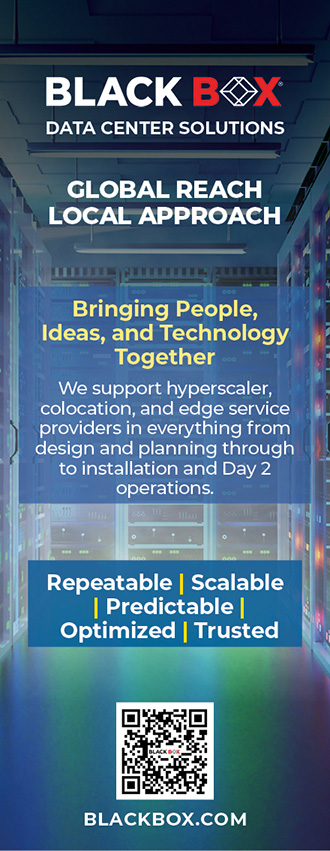Yard signs that read “No New Lines in Loudoun” are popping up like weeds along my commute to DC Byte’s office in Herndon, Virginia, from my home across the border in West Virginia. The signs protest high voltage transmission lines needed to support growth of the digital infrastructure industry in Northern Virgina, where around 70 percent of today’s Internet traffic flows through. Continued expansion of the industry in Northern Virginia, known as Data Center Alley, requires more power. The transmission lines would bring it, but area residents don’t want the power lines in their backyards. This NIMBYism is just one of the challenges our industry faces as we race to secure the power capacity needed to meet the surging demand for digital infrastructure around the world.
Today, the narrative around the data center industry’s power challenge is tightly coupled to the boom in generative AI. That’s true, but the roots of the problem stretch back to COVID-19. Data center construction, like everything else, slowed down for a few months as the world adjusted to the pandemic-induced shutdowns. As companies were forced to shift to remote work overnight, they became even more reliant on cloud services. This demand kicked off a tsunami of cloud consumption and a corresponding surge in data center expansion activity amid snarls in COVID-related supply chain disruptions. When generative AI arrived, our industry was still scrambling to keep up with demand for cloud computing.
Now, AI is not new, but the current version we’re living in is unexpected. Big deals for new data center campuses that a few years ago were in the 100MW to 200MW range are now pushing into the GW range. As these deals get bigger and the data center campuses get bigger, our industry is starting to recognize that power is the primary limiting factor to growth. Some industry analysts predict that we’ll be out of power within five years. We need to figure out how we’re going to adapt, or much of the planned data center construction will not come to fruition.
In markets like Northern Virginia, the power challenge is primarily a transmission challenge—the regional utilities can generate enough power for the data centers, but the grid infrastructure is insufficient to transmit the power to the data centers. The new controversial high-voltage transmission lines carrying power into Loudoun County would solve this problem by 2025, but building them there requires permitting new lines through multiple municipalities where opposition is fierce.

The power generation challenge is also wrapped up in the broader theme of sustainability. Many players in the data center industry are committed to achieve net-zero carbon emissions between 2030 and 2050. While these goals are well intended, practically speaking I don’t know how they’re going to accomplish what they say they’re going to accomplish. Fortunately, our industry has brilliant people who are hard at work trying to figure it out. What I can tell you is that if our industry’s power demand is going to triple, it’s not coming from solar panels in the backyard of the data center. Today, it’s going to come from coal or natural gas. That’s why the digital infrastructure industry must deliver additive carbon offset, capture, and sequestration projects in parallel to pay down the carbon debt from the bridge use of coal and natural gas, as noted in the SOTI.
The power constraint has also spurred activity within the digital infrastructure industry to seed development of new clean power sources. On the table is everything from fusion and green hydrogen to enhanced geothermal and small modular reactors (SMRs). These options will take years to decades to scale. Even then there are questions of how communities will react when the data center industry announces they are digging 200-foot holes in the ground and dropping SMRs into them.
Some members of our industry are taking a lead-by-example approach to the power challenge. For example, Amazon Web Services recently purchased the Cumulus Data Center from Talen Energy Corp in Pennsylvania, which is located adjacent to the Susquehanna Steam Electric Station nuclear power plant, and announced plans to build up to 15 more data centers on the campus, powering them all with nuclear. To be simplistic about it, AWS effectively said, “Nuclear is not the big bad wolf. It’s going to be okay. We can do this.”
Other digital infrastructure developers are looking to Tier 2 or Tier 3 market cities that have available power capacity and local demand for low-latency digital services. Regions further afield with abundant and established sources of clean power, such as hydroelectric and geothermal, are also getting a second look for development of data center campuses. Mid- to long-term solutions may rest in master-planned clean energy zones. And given the delays the industry is already experiencing getting power into established markets, now is the time to start talking about their development. To start, the industry could follow AWS’ lead and find industrialized zones with available clean power and turn them into these visions of the future.
ABOUT THE AUTHOR
Colby Cox has nearly a decade of experience in the data center industry with extensive technical expertise and a profound understanding of the evolving technologies and trends that are shaping the data center landscape in the Americas. He also leads the strategic vision and execution of DC Byte’s platform, which offers a complete and accurate view of the global data center market covering both colocation and self-build enterprise assets. This platform includes tracking growth in almost real time. Cox and his firm were instrumental in providing insights into the global capacity metrics that are shown in the SOTI.



